TRAVELS WITH YOUR NAVIGO – THE CHÂTEAU DE FONTAINEBLEAU
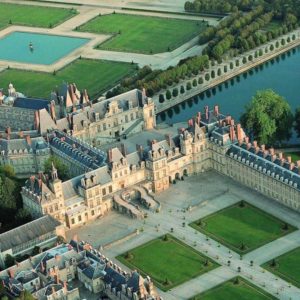
On a list of ‘must sees’ for most visitors to Paris, along with the obvious sights such as the Eiffel Tower, the Louvre etc., is likely to be the Château de Versailles. Far less familiar though is the Château de Fontainebleau, arguably the centre of the history of French monarchy. No site in France can compare as a royal residence. It predates the Louvre itself by 50 years, and Versailles by 5 centuries.
Fontainebleau is the only château that was lived in by every French monarch for almost 8 centuries.
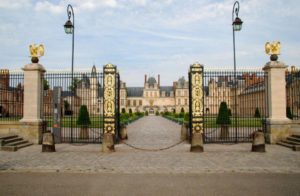
The Château de Fontainebleau is enormous. With over 1,500 rooms, it’s one of the biggest châteaux in France and also has the most furniture and decorative pieces of any in Europe.
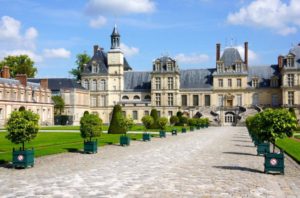
It sits in 130 hectares of park and gardens, including the largest parterre in Europe—the work of André Le Nôtre—and a beautiful English-style garden.
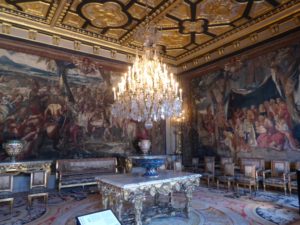
Unlike so many châteaux, Fontainebleau is so much more than a great country house for a noble family. It was originally a hunting lodge, perfectly situated on the edge of the ancient Forêt de Fontainebleau, in effect, a royal game preserve. Each subsequent monarch enlisted the skills of the greatest architects of the day such as Philibert de l’Orme, Ange-Jacques Gabriel and André Le Nôtre (who was also largely responsible for the spectacular landscaping of Versailles).
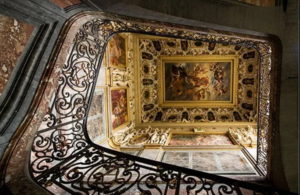
Each added to and embellished the Château as they found it, creating additions, courtyards, interiors and elaborate grounds, yet resisted the urge to destroy or replace. What the visitor sees today is regarded as the single greatest assemblage of French architecture and interior décor, still in its original state, spanning hundreds of years.
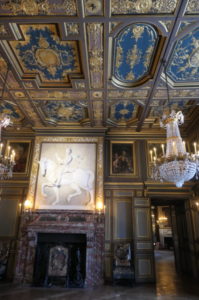
Unlike Versailles, which was perpetually under construction throughout the reign of Louis XIV, Fontainebleau was where royalty escaped to hunt, play and relax, with an atmosphere more akin to a maison de famille.
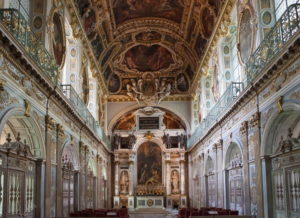
The Château dates from 1137. Thomas Becket consecrated the original chapel in 1169, and King Louis IX (later canonised to become Saint Louis), founded a hospice and convent adjacent to the Château, the Couvent des Trinitaires, in 1259. The convent’s main duty was to arrange for the ransom of Christian prisoners captured in Egypt by the forces of Ayyubid sultan Turan-shah during the ill-fated Seventh Crusade. The convent’s chapel was re-built under Francois l and re-named the Chapel de la Trinite.
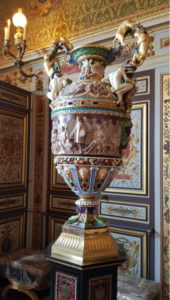
The Château remained mostly intact until Francois 1, who began a major addition around 1540 using grounds purchased from the convent. He began a new square of buildings around a large courtyard, including the spectacular Ulysses gallery, undertaken by Italian artisan craftsmen and regarded as the finest example of Renaissance decoration in France. He also added a new park in the Italian Renaissance style, and the first grotto in France.
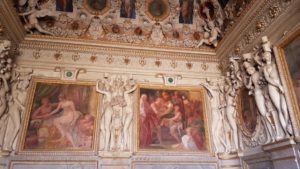
Francois I’s son, Henri II and his queen, Catherine de Medici, continued what he’d started, and further expanded the Château and added to the already vast art collection.
Even after Henri’s death in a jousting accident, Catherine continued the decoration and construction, and had a moat dug as a security measure against attacks during the Wars of Religion.
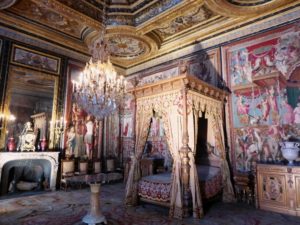
Subsequent monarchs continued the almost never-ending building and decoration works, also adding to and reorganising the gardens, and installed fountains and a lake.
Louis XIV, le Roi Soleil, spent more time at Fontainebleau than any other monarch, and was particularly fond of hunting in the vast forest. He also signed the Edict of Fontainebleau at the Château, revoking the policy of tolerance towards Protestants begun by Henri IV.
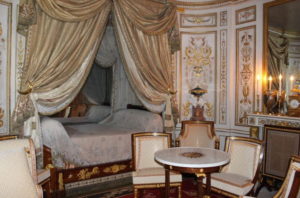
As was the fashion at the time, Marie Antoinette had a taste for exotica and had her personal apartments completely re-done, notably a Turkish-style salon in 1777 and in 1786, a boudoir in the arabesque style, featuring delicately painted palm leaves, long tendrils and spiralling stems of foliage typically used in the Islamic world, but with additional flourishes inspired by ancient Rome such as cameos, vases, sculptures and garlands of flowers.
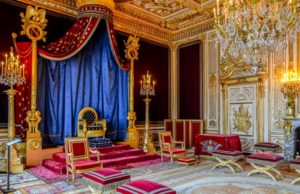
Fortunately, the Château didn’t suffer any significant damage during the Revolution, although all the furniture was either sold off at auction or sent to the Louvre for safekeeping. Napoleon l installed a military school there in 1803, and he chose the Château for his historic meeting with Pope Pius VII, who had travelled from Rome to crown Napoleon as Emperor. The former bedroom of the Kings was converted to a throne room for the new Emperor, (the throne itself came from the Tuileries palace), and the royal apartments redecorated in the new Empire style.
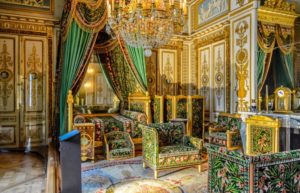
Napoleon spent the last days of his reign at Fontainebleau before abdicating there on 04 April 1814. On 20 April, after a failed suicide attempt, Napoleon gave an emotional farewell to his soldiers of the Old Guard, assembled in the Court of Honour. In his memoirs, written while in exile on the island of St Helena, Napoleon recalled his time at Fontainebleau, calling it “…the true residence of Kings, the house of the centuries. Perhaps it was not a rigorously architectural palace…(but) it was certainly the most comfortable and happily situated palace in Europe.”
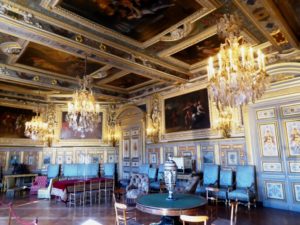
In later years, Fontainebleau was used as an occasional residence by Presidents of the Republic and as an official reception venue to welcome state guests.
During WWII, Fontainebleau was occupied by the Germans between June 1940 and the end of October 1941. Following the war, the Château became the headquarters of the Brussels Treaty Organisation—sometimes known as the Western Union—and later, NATO’s Allied Forces Central Europe, Supreme Allied Powers Europe until 1966.
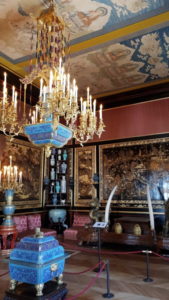
A general restoration of the Château was undertaken under President de Gaulle and his Minister of Culture, Andre Malraux over almost 5 years from 1964, and it was classified as a UNESCO World Heritage Site in 1981. In 2006, the Ministry of Culture purchased the royal stables and their restoration was begun.
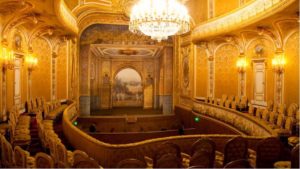
Restoration of the Imperial Theatre created by Napoleon lll during the Second Empire was begun in 2007. As the project was funded by the government of Abu-Dhabi, the theatre was renamed in honour of Sheik Khalifa Bin Zayed at Nahyan and inaugurated on 30 April 2014.
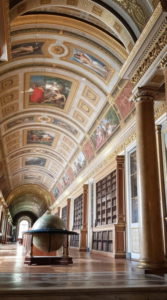
A visit to Fontainebleau must obviously start with the Château itself. The Château is open every day except Tuesdays and a few holidays such as 1st January, 1st May and Christmas Day (check the opening times, as these vary seasonally). Unguided tour costs 9€, while a small group tour costs 12.00€. Tours are available throughout the day and last for 1hr 30 mins. The park is open every day and entry is free.
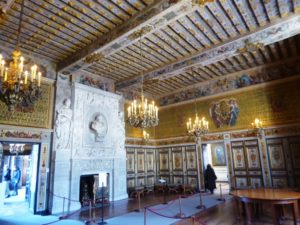
Of all the Château’s 1,500 rooms, only about 250 are open to the public, and some of those can only be seen on one of the Château’s tours. It’s a much better idea to allow time to take one of these tours, as they include the private apartments of Madame de Maintenon (second wife of Louis XIV, although never officially announced as such), the glorious Imperial Theatre and Marie-Antoinette’s Turkish boudoir. Although most of these tours are in French, there are some in English. An audioguide is an excellent introduction to the Château’s incredibly rich history.
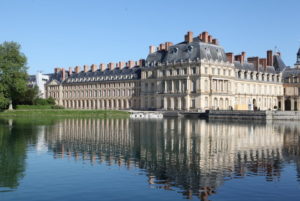
Also make sure to allow time to stroll through the gardens, especially the Grand Parterre, the English Garden and the Garden of Diana. You can also take a mini train or horse-drawn carriage ride through the park or hire a boat to float among the swans on the Carp Lake, where Louis XIV loved to feed the fish.
From Paris, it’s very easy to visit the Château using your Navigo Pass. Take a Transilien, or TER, train from Paris Gare de Lyon in the direction of Montereau/Montargis, and get off at Fontainebleau-Avon (Zone 5), which is about the second or third stop. The journey takes around 40 minutes and trains depart between every 20 and 90 minutes, depending on time of day. Individual train tickets cost about 8.85€, if you don’t have a Navigo. Once at the station, you can take the local bus no. 1 in the direction of Les Lilas to the Château de Fontainebleau, which takes around 15 mins. Alternatively, you can walk the 3 kms which takes around 40 mins. or so. The local bus is also covered by the Navigo Pass.
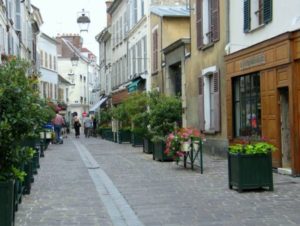
The town of Fontainebleau itself is very pleasant, and there are a number of good options for lunch, notably L’Axel, which has one Michelin star. For coffee, patisserie and a sandwich, head to the Salon de Thé of Frederic Cassel, who has been twice awarded Patissier of the Year.
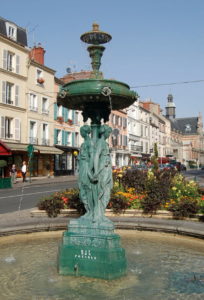
Save some time to wander around the town’s interesting narrow streets and perhaps visit some of its good quality shops, such as Fromagerie Barthélémy, the place to taste the famous fromage de Fontainebleau—part froth, part mousse, made from rich local cream. An excellent outdoor market is held on Tuesday, Friday and Sunday at the Place du Marché. Fans of the New Zealand-born writer Katherine Mansfield may be interested to know that they can visit her grave in the local cemetery.
With so much to explore of this enormous Château and its beautiful park and forest, as well as the attractive town itself, Fontainebleau is the perfect destination for a rewarding full day trip from Paris, or even an overnight stay.


Love the new blog
Can’t wait to visit Paris again and stay in your fantastic accommodation
Joanna
Hi Joanna,
Glad you enjoyed it. There’s so much to see at Fontainebleau one visit simply isn’t enough, so it’s a good excuse to return every now and again to see the things that time didn’t permit before. It helps too that the town itself is lovely, and really so accessible from Paris.